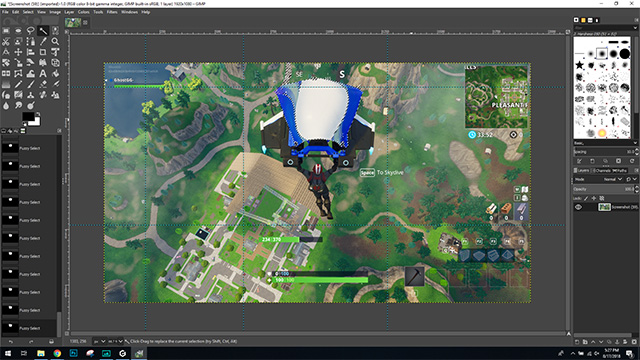The Free Select tool has no special tool options, only the ones that affect all selection tools in the same way. See Selection Tools for help with these. Since GIMP-2.10.12, selection modes work differently. Jun 19, 2018 On the example above, it’s impossible to use neither Rectangle Select Tool nor Ellipse Select Tool. You might can use Free Select Tool, but Paths Tool is the best option for such case. As a new GIMP user, you might have no idea of how to use Paths Tool yet. Actually, it’s pretty easy. First off, simply click the Paths Tool on the Toolbox panel.
This page describes how to create patches for GIMP. The instructions in this page also apply for GEGL and BABL. The content of this page is based on a mail sent to the gimp-developer mailing list from Eric Daoust (the original email can be found here)
Note: this is not a git tutorial, and it's barely a crash course. For a decent git tutorial, try reading git magic.
Required Tools
In order to work with GIMP's source (or GEGL, BABL), you will need Git, a version control system which is used for managing GIMP's source. Youtube to mp3 converter video soft free download sarah smith facebook. The offical homepage of the git project can be found here.
Sponge Tool
Checkout the source
To checkout the source of GEGL/GIMP/BABL open the command line and type
- If you want to checkout GEGL, replace
gimpwithgegl - If you want to checkout BABL, replace
gimpwithbabl - Replace
destination-folder-namewith the name of the folder you wish to create to store the source.
Modifying the source
Create a local branch for your modifications:
- Replace
branch-namewith the desired name for your branch. - If you want to base your branch on a different branch than the master branch, replace
origin/masterwith the name of the desired parent branch.
This branch will now contain your source. Do changes while on this branch, commit often (this will NOT affect other people's repository).
To see the status of your branch (which files were changed/added/removed) do:
In order to have a graphical user interface to browse the current state of the branch, and to see the exact changes you made to specific files, do:
Download What Does The Patch Tool Do On Gimp Free Photo Editor
In order to commit your changes (i.e. save the current state of the source) do:
- Replace 'Message' with your own message, describing the current commit.
Note that if you have a long commit message (longer than 80 characters), then you should brake it into a summary line (of up to 80 characters) and description lines (directly after the summary) which describe the commit with more details (again, each of the lines should not be more than 80 characters long).
Finalizing your changes

When finished (and committed code one final time) do:

Download What Does The Patch Tool Do On Gimp Free Download
Fix any merge errors, re-execute your test code, and commit again if necessary (after finishing this, execute git pull --rebase again).
Creating a patch
To create the patch do: 8bhibs english dictionary.
Patch Tool Photoshop
- Replace
branch-namewith the name of your branch (if you forgot the name of your branch, typegit branchto see which branch you are working on). - If you want to create the patch against a branch different than the master branch, replace
origin/masterwith the name of the desired branch to create the patch against. Usually, you will only create a patch against a branch different than the master if your original branch was created against a different branch. - Replace
output-folderwith the folder where you want the patch files to be created. For each one of your commits, a patch file will be created in that directory (the patch files will be numbered by the order of the commits).
Now, when someone asks you to submit a patch, send him the files that were created in the output-folder you specified.
Download What Does The Patch Tool Do On Gimp Free Download
